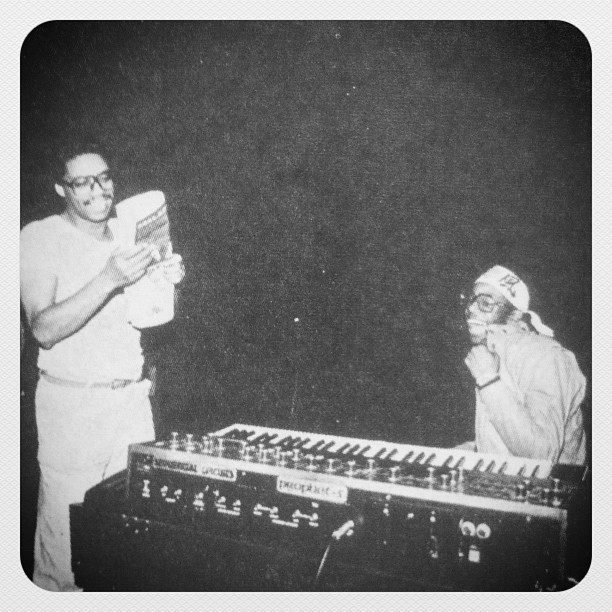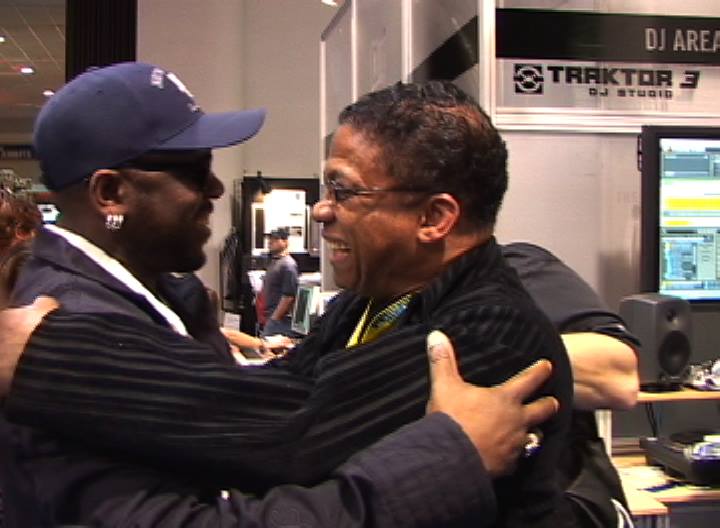AMM Talks With Hip Hop Pioneer, GrandMixer DXT

Arts Management Magazine: Tell me about the birth of Hip Hop.
Grand Mixer DXT: Being a child of the planet I was unable to detect rhythms that spoke to me. But with Hip Hop the rhythms spoke to us, and we responded. In our natural desire to synchronize with the universe, we felt things that connected us to time and space correctly, and we gravitated to it because it felt good. And what we’re calling Hip-Hop felt good.
AMM: You took a vinyl record that was intended to be listened to on a turntable and you utilized it in a very unique and musical way. How did “scratching” come about?
DXT: The invention of scratching goes to Grandmaster Flash and Grand Wizard Theodore. What I did was more of an innovation, not an invention. My innovation was to make the turntable an instrument. Scratching was where a DJ, like a DJ on a radio station, would cue the record. You edit it to make sure you’re cutting it at the right spot. That applies when you play a record and you’re not going to blend it, you’re going to cut it in to the next record. Well sometimes you made a mistake, and you cue too loud or you go over the spot, or you’re practicing and the fader will go over the spot. That’s how scratching started. My contribution to Hip Hop was taking the idea of scratching and being more percussive about it; controlling the pitch to be more melodic and varying into more syncopated rhythms and timing, which became known as turntable-ism.
AMM: Having done that, how do you view music now; where Rap and DJ inspired music, techno music, and so many forms of electronic music are so popular? Did you ever imagine that?
DXT: When you’re in the midst of innovation and you’re in the moment, there is no plan. My inspiration was to raise the bar. I did a song called “Crazy Cuts.” There was an intro verse that explains what I was doing. “Late one night in the Boogie Down Bronx, the Grand Mixer was working hard trying to innovate new forms of scratching to elevate Hip Hop.” So that was my goal; to innovate new forms so that the elevation of turntables could continue.

AMM: Apparently you accomplished that mission because now we have this whole world of DJs and turntables that really appears to have been sparked from the hit record “Rockit” you did with Herbie Hancock.
DXT: The next day after that record came out, everything changed as far as electronic music was concerned.
AMM: Tell us a little more about the evolution of Hip Hop.
DXT: Well Kool Herc was the seed. He planted the seed of bringing young people together to listen to music, via turntables and not live musicians, because very few people had instruments, so that was the way of entertaining ourselves and each other. DJ Grandmaster Flash was inspired by Kool Herc. Africa Bambata was inspired by Kool Herc. I was inspired by Kool Herc.
AMM: What about him inspired you?
DXT: He played music that spoke directly to me. He played music that spoke to all of us, and that’s why he is who he is. He played a collection of records you didn’t hear on the radio. They weren’t hit records or popular records; but they were great records and great music. No one else did that. I was a b-boy dancer, what they call “Break Dancing”,” and so we would follow him around because he was the only one who had that collection of records and all my other b-boy break dancers would follow him around just to go to his parties and dance to meet girls.
AMM: Pretty much the first inspiration of all musicians. What year was that?
DXT: 1975, 76. I’m actually a drummer but when I saw him I wanted to play records. I always carried my drumsticks with me, that’s what made me different from other DJs. Their perspective was just from the DJ’s point of view. I saw it from the perspective of a drummer. I’m thinking of Ella Fitzgerald and John Coltrane. I’m trying to innovate musically. I’m thinking of scatting.
AMM: So you referenced jazz and created a new approach to music.
DXT: I simply applied my background as a drummer and a dancer, to the turntables. My thought process was always improvisation and innovation. I used the skills that I had and improvised to create new approaches to express my talent via turntables. What inspired me to do that was Grandmaster Flash. Hands down Grandmaster Flash is the most important DJ in Hip-Hop culture in terms of inspiring DJs at taking a closer look at our gear, our instrument; the mixer and turntables. We were just sharing the information. Not directly but sharing it, just by someone being in a club and watching another DJ, then going home and trying to do what they just saw. The skill set evolved year after year. So it was that evolution of the use of the turntables that brought us to where we are today.

AMM: People are more aware of Grandmaster Flash now that he’s been portrayed in The Get Down on Netflix. So, who was the greatest rapper?
DXT: Raheem of Grandmaster Flash and the Furious Five. Hands down.
AMM: What do you think of if you go to a club or a lounge and you see one on the computer DJing.
DXT: You need a disc to be a disc jockey so without the disc you’re not actually a DJ.
AMM: So what do you call those people on their computer.
DXT: Programmers.

GrandMixer DXT did much more than take a record and begin to scratch, as other pioneers did in Hip Hop. In the early 1980s, DXT took the familiar turntable and used it like a musical instrument. The well known result being the hit song “Rockit”, a collaboration between DXT and the legendary Herbie Hancock. DXT was the first musician to use this type of rhythmic scratching. DXT’s innovation changed how DJ’s and musicians create and produce music. He went under the radar for many years producing albums for other artists and restoring great works such as the Thelonious Monk Quartet with John Coltrane during which his cleaver ear created a new science referred to as forensic editing. The GrandMixer continues to set strides in history. I am truly fortunate to have had the honor to work with GrandMixer DXT.
Rhonda Supreme







